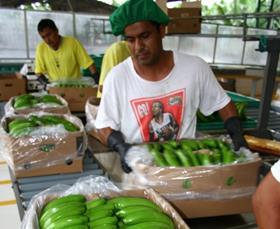
A new study reveals that banana waste could provide an important source of energy in Ecuador.
The report from the Polytechnic University of Madrid (UPM) claims the waste generated from bananas produced in the province of El Oro could cover 55 per cent of electricity demand in the province and 10 per cent of demand for bio ethanol in the entire country.
The ratio of waste generated by banana production is around 2:1, and several different types of waste are created during the process.
When plants are cut to lower the cluster, for example, the stem and leaves are either left on the ground or taken to open-air dumps. In both cases, greenhouse gases are generated by decomposition.
Further waste is generated once the cluster reaches the packing plant, where rejection rates vary between 8 per cent and 20 per cent. This is usually set aside for animal feed, but “most producers prefer to leave it decomposing outside for economic reasons”, researches said.
The study estimates that 38,604ha of production generates 190,102 tonnes of discarded bananas and 198,602 tonnes of lingo cellulosic biomass. This could potentially produce 19m litres of bio ethanol – enough to run two power plants that could generate 18 megawatts of capacity.
According to the researchers, “if this were to materialise, it could cover 55 per cent of electricity demand in the province of El Oro and 10 per cent of demand for bio ethanol in Ecuador.”
The study added that it would also help to diversity the country’s energy matrix, generate jobs, boost the local economy and contribute to rural development.
Bananas are one of the most important crops in the world. In 2013, global production reached 106m tonnes, 57 per cent of which came from Asia and 26 per cent from Latin America.



